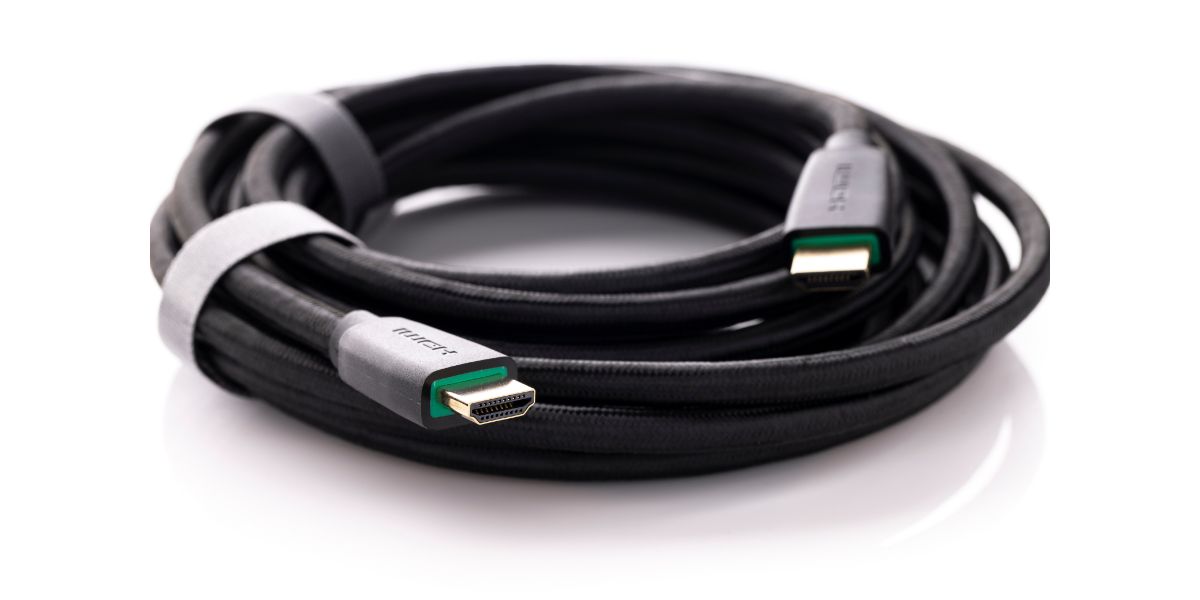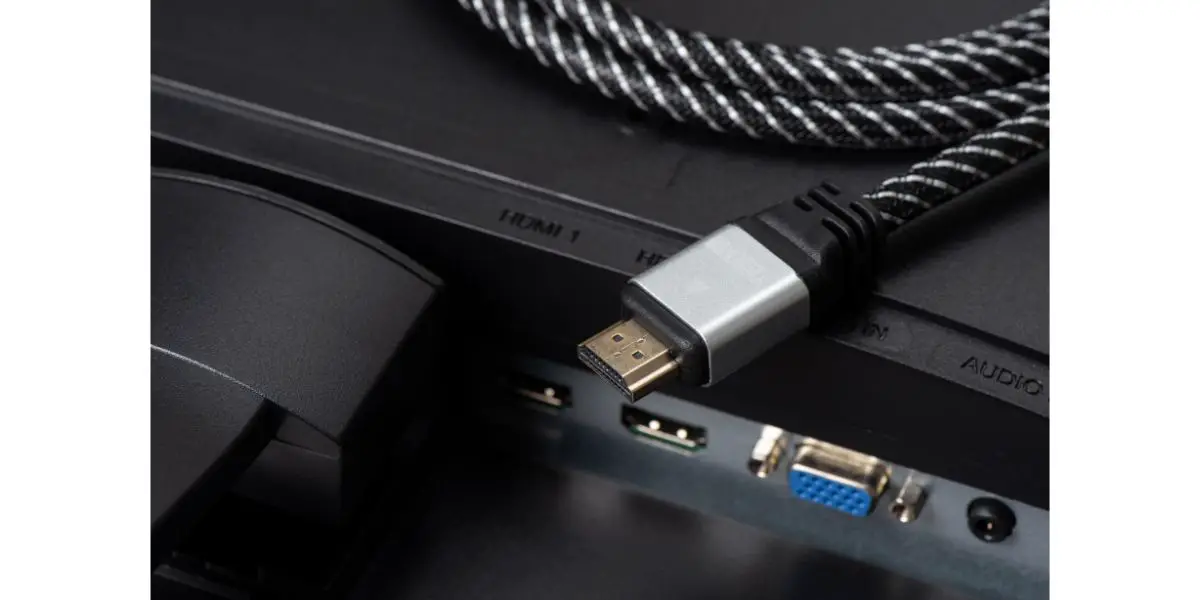Disclaimer: This post may contain affiliate links, meaning we get a small commission if you make a purchase through our links, at no cost to you. For more information, please visit our Disclaimer Page.
HDMI is the standard way to transmit video and audio to different devices, but you may be wondering if it affects output quality. Should you splurge on products that claim to provide the latest and greatest features, or are these just marketing buzzwords?
Table of Contents
How HDMI Cables Can Affect Picture Quality
HDMI cables don’t directly make a difference in picture quality as they only carry digital signals. Quality depends on the source content quality and the connected output display.
Let’s say you connected an HDMI cable from your laptop to the TV. You’ll notice a difference when you play a video on the computer and compare it with the image on the TV.
However, this difference in picture quality isn’t due to the HDMI cable. These cables carry digital signals—that is, they are in the form of 1s and 0s. In other words, when you plug in an HDMI cable, you will get a video output (1), or you won’t see anything on the screen (0).
The difference in the image quality you see is mainly due to the output display or the video source.
Can You Get Any HDMI Cable?
As HDMI cables don’t influence picture quality, does this mean you don’t have to worry about what you buy as long as it works? Not really, as there are other factors you should consider which affect the viewing experience. What are they, and why should you bother about them?
Rated Bandwidth
One thing which plays a significant role in the viewing experience is the HDMI cable’s rated bandwidth. You can think of this as how much information the cable can pass through it from the source to the connected display.
One way to know the cable’s bandwidth is to look at its HDMI version. Generally, when you go for the latest HDMI version, you will get the fastest supported data speeds.
Currently, these are the existing HDMI versions:
- 1.0
- 1.1
- 1.2
- 1.2a
- 1.3
- 1.3a
- 1.4
- 1.4a
- 1.4b
- 2.0
- 2.0a
- 2.0b
- 2.1
Remembering what each version supports can be confusing. An easier method will be to look at the rated bandwidth or speeds, which are classified into four categories.
Standard
The slowest of all the HDMI cables is the standard, with a maximum bandwidth of 4.95 gigabytes per second (Gbps). This is only fast enough to transmit a 1080p signal. As you can now get displays with resolutions like 1440p, 4K, and 8K, these cables just don’t cut it.
These days, it is harder to find standard-speed HDMI cables, as they were released over two decades ago.
High Speed
You should get at least high-speed HDMI cables, as this is the bare minimum for modern resolutions. It was a significant improvement from standard, as the maximum bandwidth increased to 10.2 Gbps. As a result, you can now view content at 4K resolution at 30 Hz.
It also came with native support for improving color accuracy, with a feature known as HDMI Deep Color. You can also start viewing 3D sources with high-speed rated cables.
Premium High Speed
As display technology and the processing power of chips improved, so did the demand for faster HDMI cables. Premium high speed HDMI cables raised the bar as the maximum supported bandwidth rose to 18 Gbps.
With the speed boost came the ability to view content in 4K resolution, with the supported refresh rate finally hitting 60 Hz. You also benefit from a wider color space, considerably improving color accuracy .
Ultra High Speed
Ultra high speed HDMI took bandwidth to a new level. This specification supports a bandwidth of up to 48 Gbps. You can view 4K resolution content at 120 Hz with this cable.
It can bump the resolution to 8K with a 60 Hz refresh rate. In fact, if the display supports it, you can push the resolution all the way to 10K with a refresh rate of 120 Hz.
Due to the high bandwidth, this cable can carry high dynamic range (HDR) data, improving the content’s color contrast, accuracy, and depth.
It also supports variable refresh rate (VRR), a handy feature for video games. This feature ensures you get a smooth experience while gaming.
One excellent feature of ultra high speed HDMI cables is that they are backward compatible. You can get it and still use it on an older display, even if it doesn’t support the latest HDMI version.
Distance From Source To Output Display
As highlighted earlier, HDMI cables use digital signals to transmit data. This means the signal degrades the longer it travels to reach the output display.
The resistance in the HDMI cables’ wires increases with distance, which reduces the voltage. It also increases the likelihood of electromagnetic interference (EMI), amplifying the number of errors in the signal.
If the length of the wire is too long, the signal degrades to a point where you won’t get any output on the connected display. Ideally, you should minimize the distance between the source and the output display as much as possible.
For example, HDMI version 2.1a ensures you get a reliable signal as long as the cable doesn’t exceed 16.4 ft (5 m). For larger distances, you’ll need cables that can amplify or repeat the signal to ensure degradation isn’t a problem.
Active HDMI cables work well in this situation as they can use the power from the HDMI port for signal amplification. This reduces the number of errors during long-distance transmission, ensuring you get an image in the output display.
Are Expensive HDMI Cables Worth the Money?
If you look at the current market, you’ll notice you can get HDMI cables for as low as a few dollars, with some going all the way to hundreds, if not thousands, of dollars. Does this mean you should get an expensive cable and call it a day?
Expensive cables don’t improve the picture quality. However, they can provide a better build quality while decreasing the failure rate.
You shouldn’t only rely on the price tag when choosing one, as you can easily overpay for HDMI cables. These days, manufacturers add all sorts of buzzwords in their marketing to make their products appealing to consumers.
Although cheaper cables may come with similar features to their expensive counterparts, they may not use the same quality of materials. For example, you can find HDMI cables that use steel, which isn’t a good conductor, instead of copper wiring. In some cases, they may coat the steel wire with copper, which doesn’t make any difference.
Similarly, cheaper cables can use low-quality materials, which will degrade faster due to wear and tear. Every time you plug in and out an HDMI cable, the pins suffer some slight wear. This won’t be a problem for a long time, but if you bought a cheaply made cable, you might experience issues sooner. Also below is an interesting video about a youtube testing out a variety of different HDMI cables.
How To Pick the Right HDMI Cables
If cost isn’t the way to go, how do you know whether you’re getting the best HDMI cable for your money? One way is to look at the rated bandwidth and either go for high speed or premium high speed, as this will be sufficient for most video formats.
While ultra high speed can give the best of everything, you should note that there isn’t enough content to make the most of its incredible bandwidth. You also have to consider the length of the cable. Because of the high bandwidth, they have a low margin for error, so you should think twice before getting cables that are unnecessarily long.
One way to ensure you’re getting the right HDMI cable is to look for proper certification. This will be present on the product box and the cable. It is a label informing consumers about the tested capability of the HDMI cable.
You’ll also find a QR code on the certification, which you can scan to verify that the cable meets the specifications marketed by the brand. For this, you’ll need the HDMI Cable Certification, an app available on both Android and iOS.
Are you wondering why your HDMI cable is causing problems? We’ve written an in-depth article on the topic, highlighting why it isn’t working properly and how you can fix it.
Why Is HDMI Certification Important?
When you see a legitimate HDMI certificate on the cable, you can rely on the cable to work properly. Every certified cable has been tested to ensure it meets the strict HDMI standards and specifications.
Testing won’t only be done before the product launch. In fact, there will be tests done until the end of the cable’s lifespan. They will also come with an anti-counterfeiting label, ensuring you can trust the brand and its products.
Final Thoughts
Although HDMI cables don’t play a role in picture quality, they can determine what resolution and frame rates you can watch. If you want genuine cables that work as advertised, always look for HDMI certification on the product.


